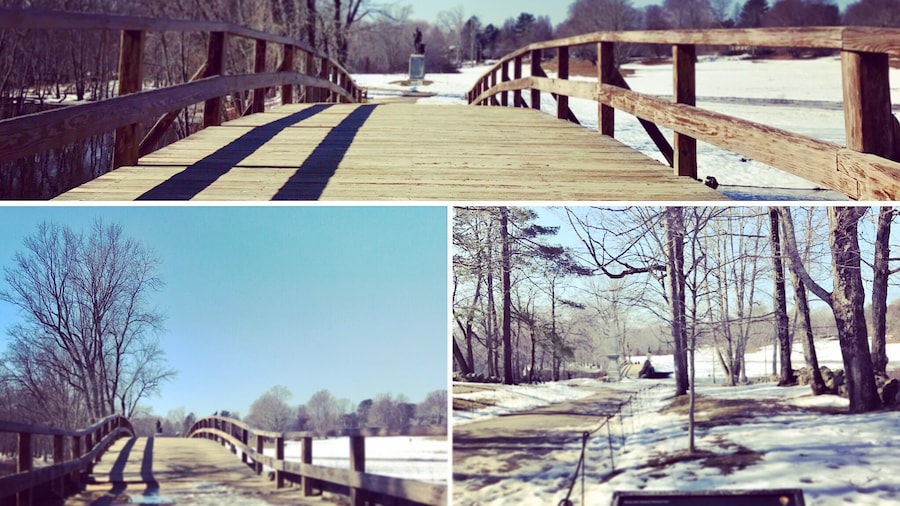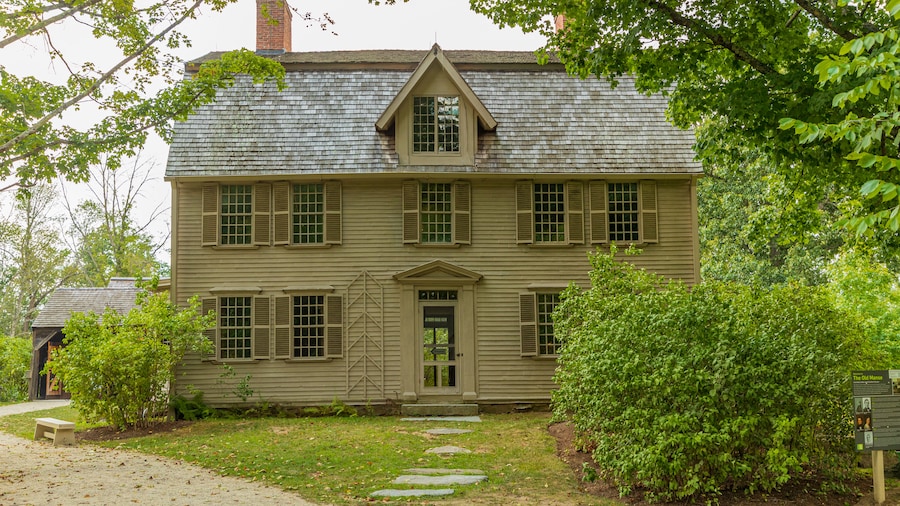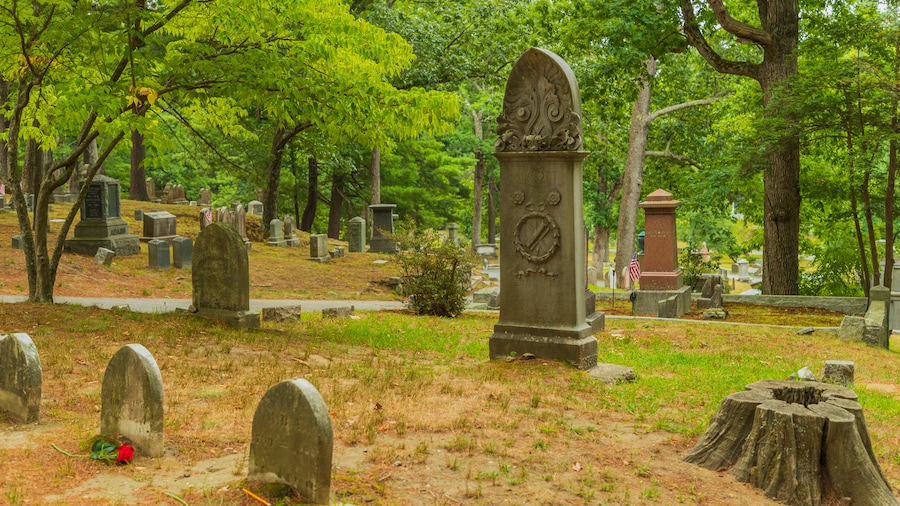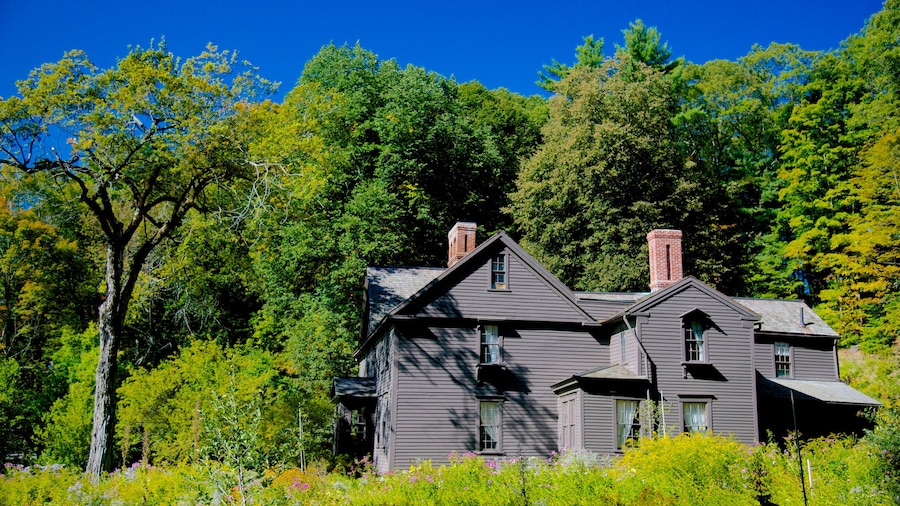Outside Boston lies the Old North Bridge in Concord, a tranquil settlement once home to Ralph Waldo Emerson and Nathaniel Hawthorne. Concord was the site of the Revolutionary War’s first real skirmish, as colonial troops fired upon British forces at the bridge. Visit the reconstruction to see where the “shot heard round the world” was fired.
British troops, sent to Concord to seize rebel weapons stockpiles, were ordered to occupy the town’s two bridges. Imagine colonial militiamen taking the high ground and storming the vastly outnumbered British guarding the Old North Bridge. The ensuing fight left dead and wounded on each side, before the British returned to Boston where the Battle of Bunker Hill would take place and the Revolutionary War would begin in earnest.
Walk the short, leafy path from Concord’s main square to the Old North Bridge. Enjoy tranquil, gorgeous scenery along the Concord River, which makes a peculiar setting for a war memorial. Observe the grave of two British soldiers who died during the skirmish. James Russell Lowell’s 1849 poem commemorates their lives: “They came three thousand miles and died, to keep the past upon its throne.”
Locals erected a memorial obelisk before the bridge was reconstructed, noting the Old North Bridge as the place that saw “the first forcible resistance to British aggression.” See the nearby Minute Man Statue, sculpted by Daniel Chester French, who went on to create the “Abraham Lincoln” for the Lincoln Memorial in Washington, D.C. This statue depicts a farmer who has lowered his plough and taken up a musket to defend his country.
The Old North Bridge is open from dusk to dawn year-round. It is located in Concord, 20 miles (32.2 kilometres) from central Boston, and easily accessible by car or commuter rail. Visit on April’s Patriots’ Day for the extraordinary sequence of ceremonies and reenactments. While in Concord, stop by its other historical attractions. Walden Pond, the Ralph Waldo Emerson Memorial House and the Sleepy Hollow Cemetery are all worth a visit, as is the Orchard House, which inspired the setting for Louisa May Alcott’s novel “Little Women.”



















